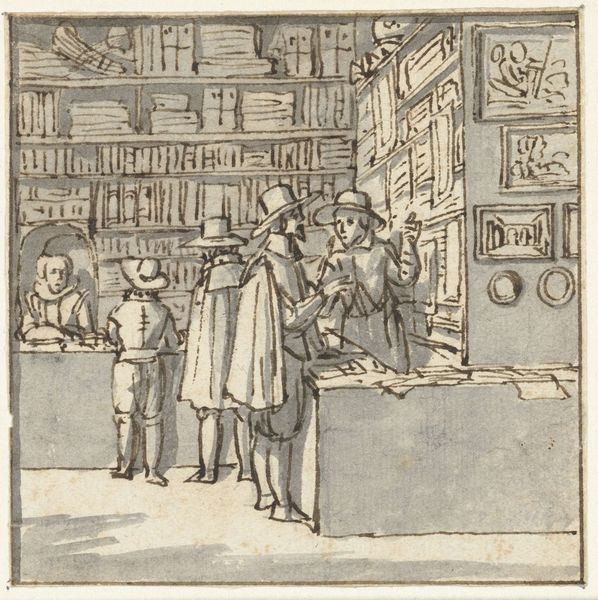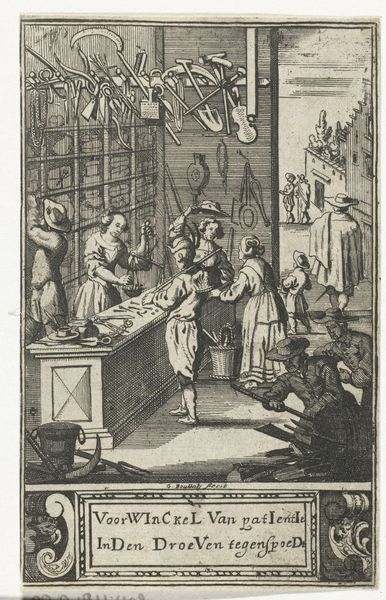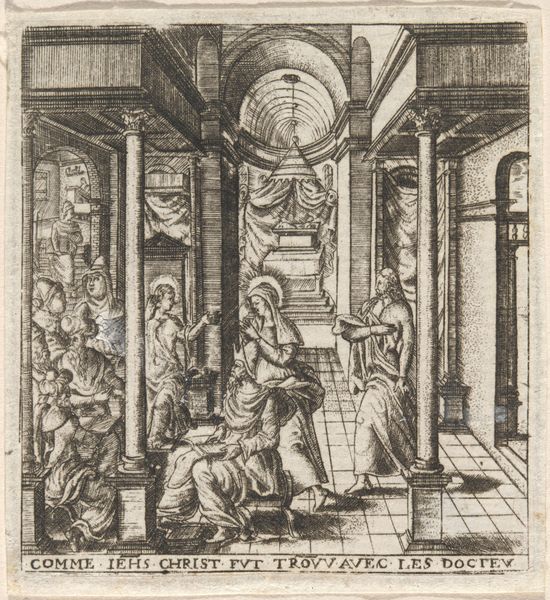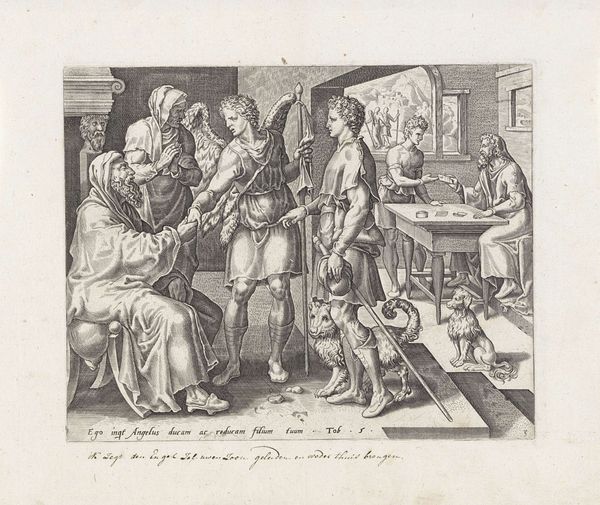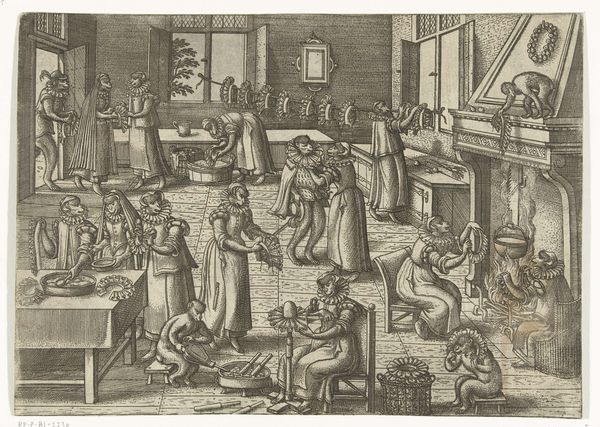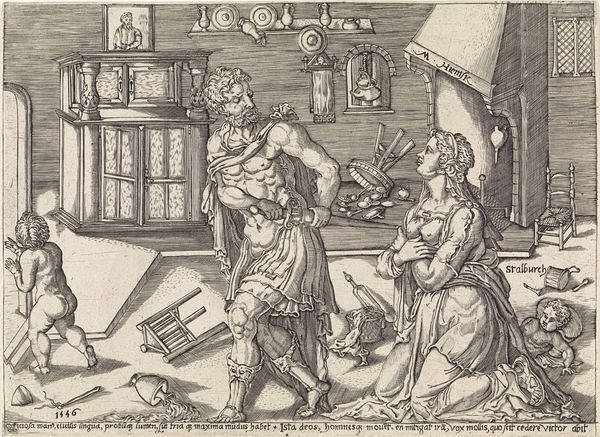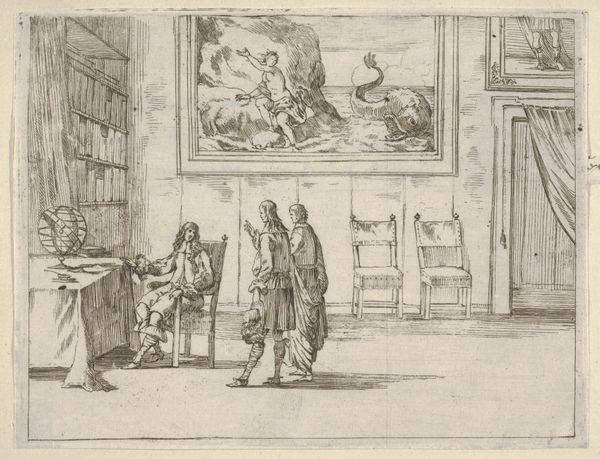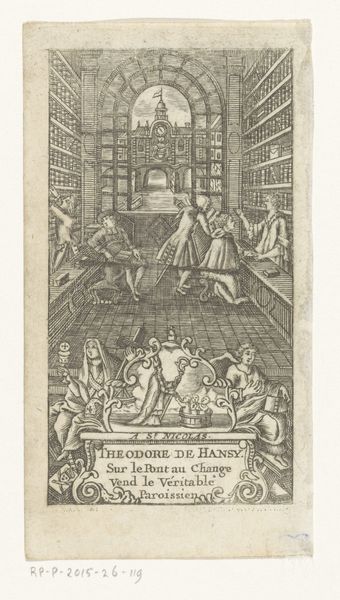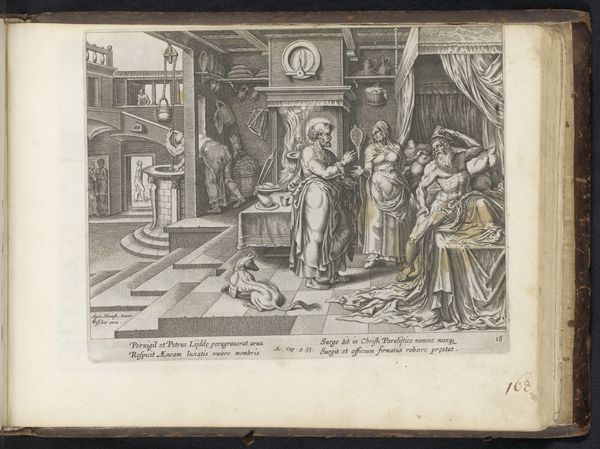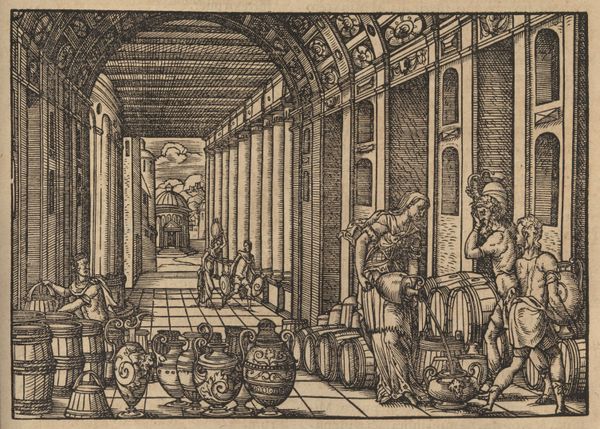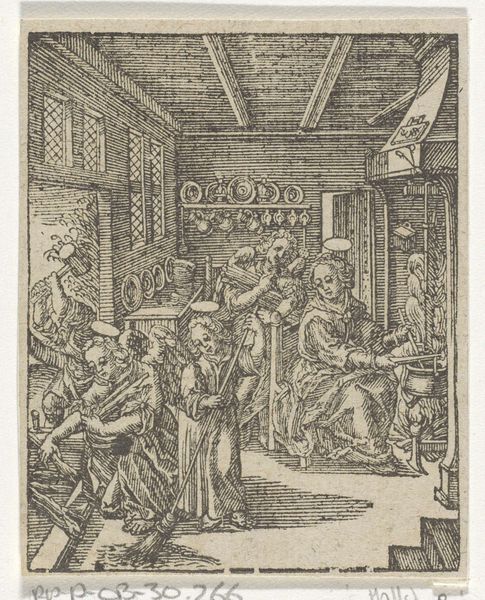
drawing, ink, pen
#
drawing
#
toned paper
#
dutch-golden-age
#
mechanical pen drawing
#
pen sketch
#
sketch book
#
figuration
#
personal sketchbook
#
ink
#
pen-ink sketch
#
pen work
#
sketchbook drawing
#
pen
#
cityscape
#
genre-painting
#
storyboard and sketchbook work
#
sketchbook art
#
realism
Dimensions: height 76 mm, width 76 mm
Copyright: Rijks Museum: Open Domain
Curator: Immediately, I notice the concentration of activity on the right; it creates a wonderful sense of energy that draws the eye into the composition. Editor: Precisely! This is "Mensen en twee honden in een boekenwinkel," or "People and two dogs in a bookstore," by Salomon de Bray. Created sometime between 1607 and 1678, it’s an ink drawing, using a mechanical pen, on toned paper. De Bray really captures the details of a burgeoning commercial center, doesn't he? Curator: Definitely. Look at the arrangement of the drawing. We get this peek into the life and commercial culture through the labor demonstrated by the merchant, seemingly bartering books to these fine gentlemen. What does it tell us about bookmaking, commerce, and material exchange during this time? The quill there looks practically brand new. Editor: Well, we know that de Bray worked within the Dutch Golden Age, a time when the Netherlands saw an explosion of wealth and, importantly, the growth of the merchant class and with that, a new kind of consumerism. The bookshop here reflects the increasing availability and demand for knowledge, literacy, and perhaps also status. These men appear ready to spend a bit! Curator: And look at how de Bray suggests class divisions—the clothing, the posture, even the presence of dogs as status symbols! But he presents this commercial exchange in such a democratic way. Light and shadow seem equally distributed and, of course, what is being produced, bought, and sold: Books! Editor: Yes, it is important to remember how access to reading and owning books can be considered in terms of both power and knowledge. The drawing situates the elite class squarely in the center of knowledge, perhaps indirectly pointing out who is being kept outside. The dogs, ever loyal and watchful, underscore a rigid social order that is on full display here. Curator: Agreed, there’s definitely something here about access and knowledge as a tool. The pen and ink materials he uses so brilliantly democratizes art making itself. Editor: Well put. This unassuming sketch becomes a potent record. Curator: Precisely! We're able to explore the labor dynamics as an accessible commercial transaction. Editor: Yes, offering us a tangible insight into Dutch society during a key point in its cultural history, revealing some interesting intersections.
Comments
No comments
Be the first to comment and join the conversation on the ultimate creative platform.
